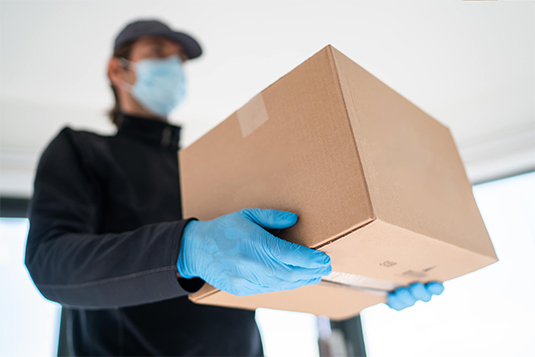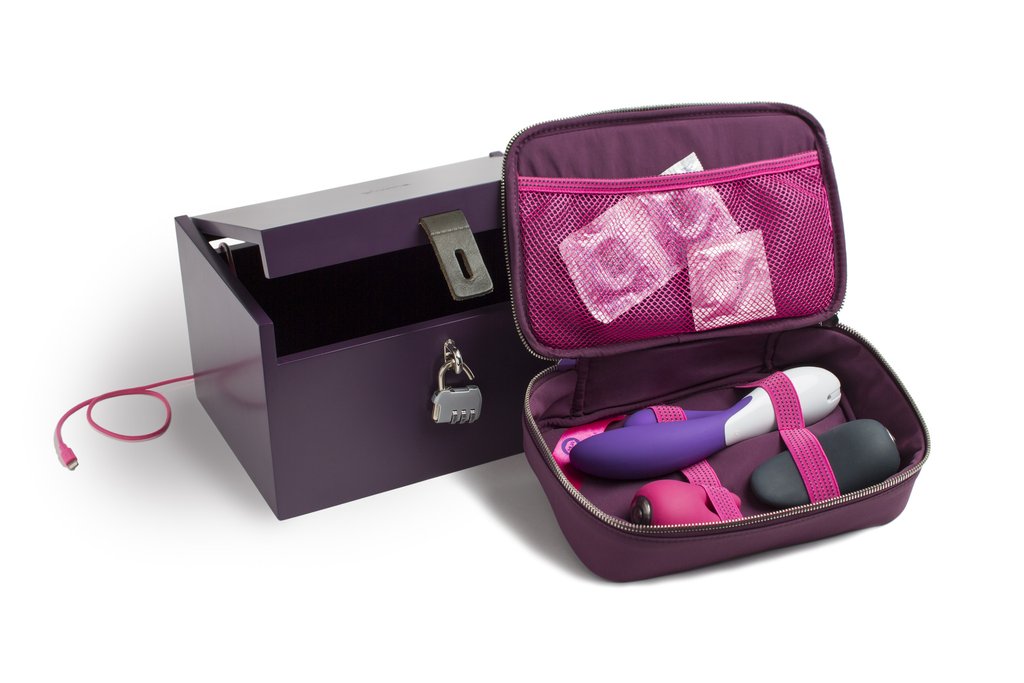Blog
Sex Toys and STDs of The Facts

Adult sex toys can do a whole lot of really great, healthy, positive things for you, no question about it. They can help you let off some pent-up sexual steam, they can pinch hit for a partner when you’re riding solo, and, most importantly, they can give you lots and lots of pleasure (ie: orgasms!) on your own terms. All good things. One thing you definitely do NOT want to get from your favorite dildo, vibrator, or butt plug, though, is an STD or sexually transmitted infection.
You’ve learned how to discreetly buy sex toys online and how to hide sex toys from prying eyes. But now it’s time for the question of the hour. Can you get an STD from a sex toy? is something that quite a few people wonder (or type into their search bars, at least), so we’re going to spend some time clearing up this burning (sorry!) internet inquiry.

SO, CAN YOU GET AN STD FROM A SEX TOY?
We’d love to give you a short and simple answer to this question, but unfortunately, the answer is neither short nor simple. It’s important to know all the facts though, so let’s get into it.
Solo Use
First off, it would be next-to-impossible for you to contract a new sexually transmitted disease or infection from a fresh, clean, sex toy that you, and only you, have access to. Just be sure to brush up on how to store sex toys and clean them properly. In other words, if you haven’t shared your toy with anyone else, you’re good. Play away.
Sharing
On the other hand, if you have shared or are planning to share your favorite silicone vibrator (or butt plug, or dildo, or clitoral stimulator, or nipple clamps) with a partner, listen up. Sex toys in and of themselves don’t cause STDs or infections, but it is technically possible that a sex toy could transmit an STD.
Because it’s always good to know what you’re dealing with (and ideally will never have to deal with), STDs and STI’s are caused by bacteria, viruses, or parasites.
- Chlamydia, gonorrhea, and syphilis are bacterial infections.
- Hepatitis B, herpes simplex (oral and genital), HIV, and the human papillomavirus (HPV) are viral infections
- Pubic lice and trichomoniasis are parasitic infections
All of these can be contracted by anyone who is sexually active, regardless of gender, identity, or orientation.
Sharing your sex toys (both penetrative and non-penetrative) with casual or un-tested partners and/or not cleaning them properly are the two biggest risk factors for possible toy-to-body infection. Luckily, it’s easy to avoid both of those things.
IS IT SAFE TO SHARE SEX TOYS?
So, can you share your sex toys with a sexual partner? Let’s put it this way – if you’re sharing a toy with a monogamous (or scrupulously honest) partner, and you’ve both been tested for all sexually transmitted infections, you’re in the clear. Honestly, it’s not a great idea to share your favorite vibrator, dildo, or plug with a casual partner, but you can certainly try to minimize the risk(s).
As we know, most sexually transmitted infections require close contact with an infected person or partner’s bodily fluids or body parts to spread. That includes, but is not limited to, saliva during oral sex, semen and vaginal secretions during penis-in-vagina sex, and blood from tiny microtears, scratches, or abrasions during anal sex or rough play.
While unprotected sex and sexual contact is a major factor when it comes to putting yourself in harm’s way, sharing your sex toys can be, too. Most toys, if not all of them, come within very close proximity to your body and its fluids. It’s possible that any bacteria and viruses you or your partner may be harboring could jump ship, so to speak, from a toy used by you to them via those fluids – and vice versa.
Again, you can easily avoid this situation by keeping your sex toys to yourself, cleaning them like your life depends on it, and ensuring that both yourself and the partner you plan to share your toy with have been recently tested for all STIs and STDs.
HOW LONG CAN AN STD OR STI STAY ON A SEX TOY
The bacteria or viruses that cause STDs and STIs can not live long outside the body, or, more specifically, outside the mucous membranes of the body. They like a warm moist environment, and without one, will quickly die off completely, or become so weak that they are very unlikely to be able to infect a new host.
Theoretically, you would need to share your un-washed toy with a partner immediately after using it, or within a short period of time for there to be a significant chance of infection. When it comes to protecting your sexual health, and that of your partner, though, zero chances of infection is what you’ll want to see. So, Wash. Your. Sex. Toys! Or, be super-safe and just don’t share them.
Here are some science-y points of reference. The type of bacteria that causes gonorrhea can survive for up to 2 hours on environmental surfaces. However, it can’t be cultured after two hours, which means that it’s not active or strong enough to ‘grow’, or re-infect. HIV can be detected for several days outside the body, but after several hours in a dry environment, 90 to 99% of the virus is non-infectious.
To sum up, a (very) clean sex toy, and ideally one that has been left to dry fully for a few days is unlikely to infect you or your partner, should either of you have an STI or STD. On that note, there are some sex toy materials that should probably not be shared, ever, and others that are more suited to sharing.
Porous Sex Toys
Porous sex toy materials, like TPR, elastomer, latex, and plastics can harbor STI-carrying viruses and bacteria longer than their non-porous counterparts. ‘Porous’ refers to literal pores or tiny openings that occur naturally on the surface of your jelly, soft rubber, or elastomer toy. Those openings can trap viruses and bacteria and are extremely difficult to clean fully and reliably. You should probably keep toys made of these materials to yourself.
Non-Porous Sex Toys
Non Porous materials like steel, glass and high-quality silicone don’t have any of those sneaky little pores, which means that there’s nowhere for bacteria and viruses to hide. Many sex toys made from these materials can even be boiled or bleached for yet another level of STD and STI protection. These toys can be more safely shared. Again though, for zero risks, there should be zero sharing.
CAN YOU GET AN STD OR STI FROM YOUR OWN SEX TOY?
If you and you alone have the all-access pass to your toy, no. The one tiny exception would be a situation in which you had, or were being treated for an infection, used your toy, did not clean it properly, and then used it again. In that case, you could, possibly, re-infect yourself.
If you do find yourself in this situation, or if you find out that your play partner has contracted an STD or STI, you can do one of two things. If your toy is made of a porous material like jelly rubber, latex, thermoplastic elastomer, TPR, and some plastics, you’re better off replacing it. Sorry! If it’s a nonporous material like steel, glass, or a high-quality silicone, you can wash it really, really well and avoid using it for a week or so.
As we learned above, most bacteria and viruses can’t survive long on most surfaces. If they manage to worm their way into the crevices and larger pores that can exist on softer toy surfaces, though, you can’t be 100% sure that they’re gone. Better safe!
STAY SAFE WITH YOUR SEX TOYS
Before we sign off, here’s a SexPurple PSA: STDs and STIs are much more common than some people think, and, despite some lingering stigma around contracting a sexually transmitted infection, most are easily treatable and don’t cause long-term harm. According to the American Sexual Health Association, over half of the human population (that’s 390,000,0000 people) will pick up a sexually transmitted disease or infection at some point in their lives. So don’t panic. That said, if you ever have concerns about any aspect of your sexual health, please speak to a health care professional or OBGYN.


